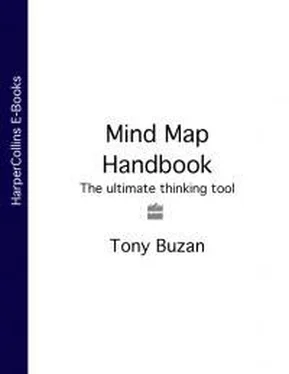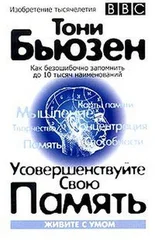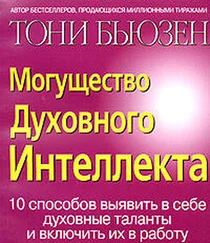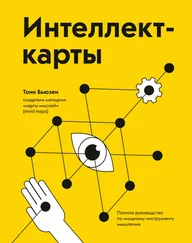Consider the nature of music: it is written on lines, in sequence; it follows its own logic; and it is based on numbers. Music has often been described as the most pure form of mathematics there is (and it is interesting to note that many of the great mathematicians had music as their main hobby, and vice-versa).
As well as being passionately imaginative and rhythmical, Beethoven was also passionately meticulous. It was Beethoven who pioneered the use of the musical metronome, stating that it was a Godsend to him because it would now mean that every musician and conductor in the future would be able to play his music at precisely the right rhythm, with precisely the right emphasis, and at exactly the right mathematical tempo!
As with Einstein, Beethoven was neither right-brained or left-brained. He was completely and creatively whole-brained .
women were irrational daydreamers
emotion was not based on associative logic
creativity and art were not ‘proper’ pursuits, and had no rationality or science behind them.
The tragedy of these misconceptions, which sadly are still common today and which the Power of Creative Intelligence will help to dispel, is that they blind the mind to the truth, and therefore diminish pleasure, experience and existence.
Unfortunately these misconceptions are especially prevalent in the arena of education. Because we assume that education has to be ‘left-brained’, we label those children who are energetic, imaginative, colourful, curious or given to excessive bouts of daydreaming as naughty, disruptive, hyperactive, slow or backward. We should instead be labelling them as potential creative geniuses just beginning to explore the range of their abilities!
Similarly many businesses have become stuck in the ‘left-brained’ rut, and as a result are destroying not only the synergy that comes from combining left-brain business practices with imagination and flair, but also their reputations and their bottom lines.
Consider also, in the context of this book, the global image of the artist. Surveys have shown that most people consider artists to be messy, untidy, dishevelled, weak in logic and memory, and lacking in structural and organizational skills. Sadly, millions of art students around the world try to live ‘up’ (it’s actually down !) to this ‘ideal’ vision of the artist. As a result they reject words, number, logic, order and structure, and create only passing images in their minds.
Left/Right Brain Thinking in the 21 stCentury
As the Century of the Brain begins, we now realize that the creative brain is the whole brain. Furthermore, we realize that our earlier acknowledgement of our labelling mistakes has led us to an awareness that our creative potential is even greater than we had thought.
A simple question and comparison will make this clear.
If we have been using only half of the skills of the brain, at what percentage efficiency have we been operating?
The immediate answer would appear to be 50 per cent. This indicates that we have been making ourselves into half-wits! However, even this is an overestimation, as a simple example makes clear.
If I said to you that I wanted to measure your efficiency at running, and in Trial 1 I allowed you to use 100 per cent of your body, including arms and legs. Imagine how you would do if I videoed your running style and then examined it for mechanical efficiency. Most of us would score pretty highly.
Imagine now that in Trial 2 I allowed you only 50 per cent of your operating potential, and tied your right hand and foot together, behind your back. How would you do? You’d be flat on your face within a couple of seconds! Efficiency? Less than zero.
Why? Because the parts of your body are made to work together , and in so doing each part multiplies a thousand-fold the efficiency of the other.
It is the same with your brain. When you use only one side of your cortical skills, your creativity is nothing in comparison to what it can be. When you use both sides, your creative potential becomes infinite.
In the Creativity Workout that follows, and in the remaining chapters, I will explore methods of unleashing that infinite creative potential.
Creativity Workout
1. Use the Whole-brain Skills Set to Examine your Life
Check how many of your left-brain skills you normally use and nurture. Next do the same with your right-brain skills. Pay attention to any of those right or left-brain areas that you are neglecting and begin to exercise and strengthen them right away.
2. Education
If you have children, apply whole-brain thinking to their entire education, including school, social and home-life education. Try to help your children achieve a balanced education, in order that they may lead far more creative and fulfilled lives.
Not only that – apply the same principles to your own ongoing, life-long learning, so that you may lead a more creative and fulfilled life too.
3. Take Breaks
Surprisingly, whole-brain thinking demands that if you are going to be fully and truly creative, you must take regular breaks.
Think about it: where are you when you come up with those bursts of imagination, those solutions to problems, those great fantasies and daydreams? Most people’s answers include some or all of the following:
in the bath
in the shower
walking in the country
before going to sleep
while asleep
upon waking up
while listening to music
on a long-distance drive
while out running
while swimming
lying on the beach
when ‘idly’ doodling
In what state are your body and mind at such times? Relaxed, and often alone.
It is in these rest-periods that the two sides of your brain are able to converse and communicate with each other, and when the vast well-spring of your creativity is allowed to express itself.
If you don’t decide consciously to take these breaks, your brain will decide for you. Many ‘hard working’ (but not ‘smart working’) people report that, as the years go on, they become more stressed and their concentration begins to wander. This is actually a good thing, for it is their right brains insisting that a little bit of imagination and fantasy should be allowed in to balance an unbalanced state.
If you are in this situation and you continue to persist in pushing your left-brain-dominant lifestyle, your brain will make you take other kinds of breaks, ranging from losses of concentration, to mini-breakdowns in which you become unreasonably irascible, to full blown blow-outs where the only cure is … rest and relaxation!
Do it consciously. Give your brain and yourself a break. Your Creative Intelligence will love you for it.
4. Go for Long Walks or Rambles
The Romans had a special phrase, solvitas perambulum , which can be roughly translated as ‘solve it while you walk’. What they had realized, although obviously not in left/right-brain terms, was that if you take your brain for a walk, especially outside in the country, the steady rhythm of your limbs’ movement, the regular rhythm of your heart pumping more strongly, doses of oxygen-filled blood flowing into your brain, and the feast that your eyes, ears and other senses have while you walk, all contribute to creative thinking and problem solving.
If you have a creative task or problem upon which you are working, ‘Walk it Out’ and you’ll ‘Work it Out’!
5. Be Creative in your Everyday Life
On the following page, list those areas in your everyday life that you think are creative, and those that you think are not creative. When you have finished, read on.
Читать дальше












